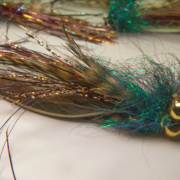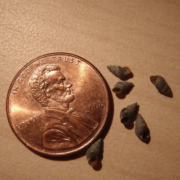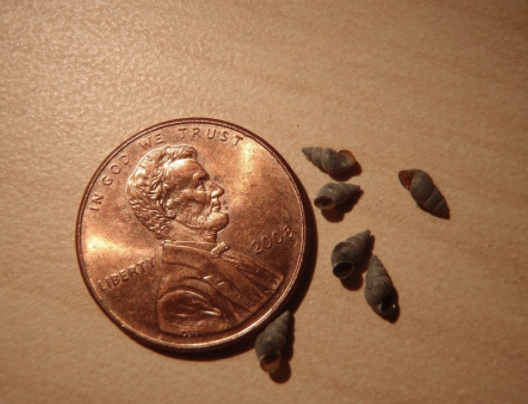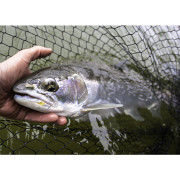My Favorite Colors from January-May
I have no affiliation with the people who make a certain product, but I have to say that some of their stuff is brilliant. The product that I am speaking of is ice dub, and between ice dub and the various colors of flashabou, I could guide every day with little else than thread and hook (though I do like some feathers and fur too:)). During the months of January-March, I rely very heavily on one color family of ice dub. The colors are olive, peacock-eye, peacock, and black peacock. These colors seem to imitate the same things to the fish. It could be that the sheen on this color scheme is just plain appealing to fish (it is an attractor color). On the other hand, it could be that many of the bait fish in the river take on a peacockish tint during the winter months.
When I started looking underwater in the winter, I was surprised at just how many creatures had a bluish/green tint in the winter months. The darter above is just one example of this color scheme in nature during the winter and spring. Crayfish, scuds, gobies, and other fish also have this peacock overtone to their colors.
Whether it is just naturally attractive, or whether it is due to the colors occurring in nature, or some combination of the two, I am not entirely certain. At the end of the day, these colors of ice dub just work great for catching predator fish.
Through the first half of the year, flies with this color scheme can be fished in several different ways. They can be swung on sink tips through flat runs during the winter months for steelhead. Another option is to fish the soft edges of the stream for resident trout with smaller olive or peacock based flies. I really enjoy swinging wet flies for trout and this is a great extension of wet fly fishing through the winter months. Yet another option is to tie weighted sculpins and fish them below an indicator for trout. Often times a nymph pattern is fished on a dropper between the indicator and the weighted sculpin.
This post mentions the months of January through May. However, as a guide, these colors are in my box year around, no matter what species I am guiding for. Give this color family a shot on your local stream. I am pretty sure that it will work!
Thanks for reading this!














